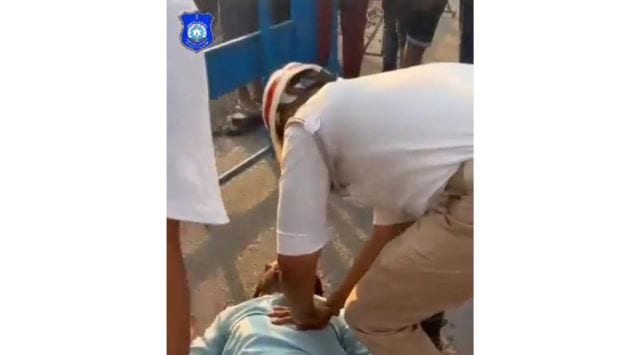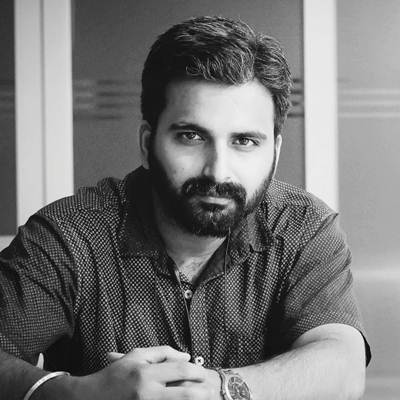It was just another Friday afternoon for home guard Shaik Mohammed Shahbaz, 32, who was busy manning traffic near Puranapul in Old Hyderabad in May this year when a motorist crashed right before his eyes. The man riding the scooter, a youngster from Tolichowki, fell unconscious.
“It was quite a crowded place. He was unresponsive and sweating profusely when I reached him. I realised he had stopped breathing and without a second thought I started cardio-pulmonary resuscitation (CPR),” said the 2013-batch officer from Bahadurpura traffic police station. After around 30 chest compressions that lasted about two minutes, the biker vomited and woke up.

Appreciating Shahbaz’s presence of mind, Hyderabad Police Commissioner C V Anand tweeted that incidents of people of all ages collapsing due to sudden cardiac arrest were too frequent. Adding that he would take up a training drive for all police personnel on how to give CPR, he suggested that each one get the training as “we don’t know when we may need it”. A series of similar incidents were reported from across the state at the beginning of the year.
Story continues below this ad
In February and March alone, about 10 cases of death due to sudden cardiac arrest were reported from across Telangana. A few of these incidents were even captured on CCTV or phone cameras. For instance, a middle-aged man in the old city collapsed during a wedding ceremony as he was about to apply turmeric on the groom, a young police constable in Secunderabad collapsed as he was warming up for a workout in the gym, a teenager in northern Telangana’s Nirmal district collapsed and died while dancing at a wedding. A couple of others died in the same manner while they played badminton with friends.
According to a research study published in the American Heart Association (AHA) journal in 2018, Sudden Cardiac Arrest (SCA) is a major cause of mortality across the world and in India, 7 lakh people die from SCA annually, many of them under the age of 50. The study “The Acceptability and Impact of a Pilot Community Hands-Only Cardiopulmonary Resuscitation Training Program in India” was conducted in Telangana with 582 participants whose belief that CPR can save lives increased from 49 per cent to 96 per cent in females and 51 per cent to 97 per cent in males. Following the training, 96 per cent of the participants knew the correct compression rate as compared to only 6 per cent pre-training.
Observing a disturbing trend of relatively younger persons succumbing to sudden cardiac arrest, a decision was taken by the state government to train all field-level healthcare workers and government staff who share maximum interaction with the public. On March 1, Health Minister T Harish Rao along with Municipal Administration and Urban Development Minister K T Rama Rao launched the programme where the latter advised the department to also procure automated external defibrillators (AEDs). Responding to this, the health minister immediately announced that 1,200 AEDs would be procured in the first phase to be placed in public places and even apartment complexes.
Four months later on Tuesday, a senior health department official, when asked about the same, said the procurement process is in the last stage and added that in the meantime, the department has trained about 1.45 lakh staff members in performing CPR.
In each of the 33 districts, the health department identified three to five medical officers to be trained as master trainers in performing CPR. Each of them gave training to staff at the district level and mandal level.
Story continues below this ad
“The focus was on those staff such as ASHAs and ANMs, Anganwadi staff, medical officers, police personnel, village and panchayat staff, municipal and RTC employees etc. At least sixty people, depending on their availability, were identified and training sessions were conducted five days a week. Each group had 15 to 20 people and each of them got 10 to 20 minutes of training, five to 10 minutes of demonstration, and then individual practice on mannequins,” programme officer Dr K Rama Krishna explained.
A trainer of trainers (ToT) from Mulugu district, Dr Suram Srikanth said there are five components in the training programme and communicating them in the local language helped in taking the message to all. One may encounter instances of a person losing consciousness due to an accident, electrocution, snakebite, etc or even a medical condition and all of these may not be sudden cardiac arrest, said Dr Srikanth, who added that the first responder has to ensure the safety of the surroundings, shift the person to a hard surface, and assess the person’s responsiveness while simultaneously calling for immediate ambulance support.
He said promptly confirming if a person has stopped breathing by checking their pulse on the neck and nostrils is necessary before starting CPR. “But all this has to be done immediately. The responder has to be on the right side of the unconscious person and use shoulder strength instead of relying solely on the biceps. The external compressions to the heart should be given using the dominant hand, supported by the other. It is crucial not to rush, maintaining a steady pace of 100 to 120 compressions per minute until the person regains consciousness,” he said.
When contacted, the state programme officer for National Health Mission and in charge of the CPR training, Dr Pruthvi Raj, said the training programme is in its nascent stage and Telangana is pioneering it as a mass training programme for its field staff though the Union government has issued a training module for CPR. “As a continuation of the programme, the department will soon start refresher training for the health and paramedical staff and once AEDs – that can be used even by an untrained person – are made available at primary health centres, the next stage of training will commence on how to use AEDs,” he said.
Noting that much more needs to be done before the government’s programme is effective, Dr B Vijaya Rao, a Basic Life Support (BLS) and Advanced Cardiovascular Life Support (ACLS) instructor trained and certified by the American Heart Association, said heart attack and cardiac arrest are entirely different and a sudden cardiac arrest can occur to anyone at any time. “There are no known causes of sudden cardiac arrest. As studies worldwide show, there is an 80 per cent survival chance if CPR and AED are used efficiently within five to six minutes of sudden cardiac arrest,” he said.
Story continues below this ad
Emphasising that the general public should be educated on lifesaving CPR and AEDs, Vijaya Rao noted that these devices that can be used by any lay person should be made available in public places. “There is a need for awareness creation at the community level by ensuring participation of residents’ welfare associations, apartments and housing societies. Since most people live in villages, the initiative should first focus on people in towns and let them percolate to villages. Compared to western countries where awareness of CPR is about 60 per cent, it is about less than 2 per cent in India,” he said.









